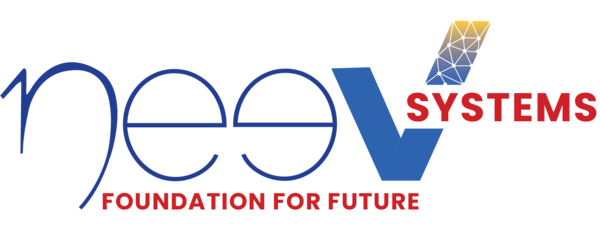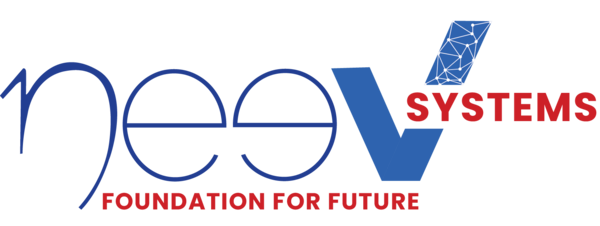Executive Summary
ERP and IoT are redefining supply chain visibility, turning legacy ERP systems into powerful sources of real-time insights that drive smarter decisions and strategic planning. This blog explores how IoT sensors across the supply chain deliver live data on inventory, asset tracking, and performance, providing unprecedented transparency.
With these data-driven insights, inefficiencies become clear, and processes can be fine-tuned, leading to greater efficiency and cost savings. Neev Systems offers expertise in integrating ERP and IoT to support businesses on this journey, helping build a more agile, responsive supply chain.
Key Takeaways
- Embrace the power of data. It can predict the future or, at least, the next step in your supply chain.
- Deploy IoT sensors to gather real-time data and keep your supply chain in the loop.
- Use your ERP system to analyze data and optimize operations.
- Combine ERP and IoT for a powerful force that will transform your supply chain.
- Don’t be afraid to get your hands dirty. Implementing ERP and IoT takes time, effort, and elbow grease.
Is your supply chain truly under control without complete visibility? Are supply chain disruptions or lack of real-time data insights impacting your operational efficiency and customer satisfaction?
What used to be a straightforward, linear process has evolved into a complex web of suppliers, production hubs, and logistics. You are no longer just tracking materials but managing a dynamic network, which makes control much more challenging.
Let’s admit it: visibility is slipping through the cracks. However, the solution is not buried in outdated systems or guesswork – it lies in technology, specifically ERP and IoT. With IoT in the supply chain market projected to hit $41.8 billion by 2033, the momentum is clear.
Now, picture a different reality: real-time insights replace fragmented processes and manual data. ERP structures your operations, while IoT sensors provide a constant stream of live data on everything from inventory to transportation. Together, these technologies restore clarity, and you can predict, respond, and optimize your performance at every step.
Isn’t this the high time to take back control? Discover how ERP and IoT drive a more responsive and efficient supply chain.
Why Supply Chain Visibility Matters?
Are you confident in your supply chain’s performance?
Can you say, with certainty, that every link in your chain is running smoothly?
If you answer yes, it’s likely because of supply chain visibility. From your ERP system to your transportation and warehouse management, it draws from multiple data sources, connecting the dots and helping you stay in the know.
Not convinced enough? Half the biggest global logistics firms plan to leverage AI and IoT in their operations by 2025. Integrating this with external factors like weather patterns, market shifts, and data from your partners, supply chain visibility gives you the whole story. And you need that story. Without it, you just manage symptoms, not solve the root problems.
The benefits of supply chain visibility are substantial, affecting every part of your business. Here’s how:

ERP and IoT : An Imperative for Future-Ready Supply Chains
Achieving supply chain visibility is no small feat. Understanding the reasons behind late deliveries can feel overwhelming in a world awash with data.
Is it traffic?
Weather disruptions?
Or inventory shortages?
The key to clarity lies in two powerful technologies: ERP systems and the IoT. ERP is the backbone of your supply chain, consolidating all critical data into a single platform. It integrates inventory, finance, production, and procurement, offering a unified view.
IoT takes this a step further. By deploying sensors at critical points throughout your supply chain, you can collect and transmit live information on things like the location of your shipments, the condition of your inventory, or even machinery performance in your factories. Together, these technologies provide visibility far beyond what traditional systems ever could.
The number of connected IoT devices grew by over 15% between 2022 and 2023. Market assessments forecast a further 13% growth by the end of 2024, taking the number to 18.8 billion, up from 16.6 billion in 2023.
“As IoT evolves from the conceptual and ‘half-invented’ and starts becoming ‘fully-realized’, we speculate on the swift and radical changes soon to be witnessed across critical industry segments, from food chains to circular economies within retail, with physical products not only ‘born digital’ but where ‘second lives’ are made possible from the moment of purchase.”
Francisco Melo
President of Solutions Group at Avery Dennison
The benefits are:

How a global manufacturing leader optimized supply chain and order management
A leading global manufacturer renowned for its diverse product lines faced a critical challenge: extracting actionable insights from its legacy Oracle ERP system. Despite housing a wealth of financial and operational data, the company struggled to access real-time information for data-driven decision-making.
Neev Systems stepped in to transform this situation. A seamless data pipeline was created that delivered actionable insights through meticulous data mapping, HevoData setup, Snowflake configuration, data validation, and Tableau integration. The result was a powerful data platform that empowered the client to make informed decisions, optimize supply chain operations, and drive business growth.

Transform Your Supply Chain with Real-Time Insights
A Roadmap for ERP and IoT Integration
You have decided to explore ERP and IoT integration for your supply chain. But let’s be honest: It’s not just about putting a bunch of tech together and hoping for the best. You need a plan and a strategy to make things work.
Here’s the roadmap:






What’s Next? Future Trends in SCM
The supply chain landscape is rapidly evolving. Traditional methods are giving way to groundbreaking innovations that redefine business operations.

Gain Complete Supply Chain Clarity with Neev Systems
The journey toward enhanced supply chain visibility is ongoing, fueled by technological advancements and changing business demands. ERP and IoT will continue transforming how businesses manage their supply chains.
At Neev Systems, we provide a robust suite of applications tailored for supply chain management, empowering your organization to reach new heights.
Our EAS suite features essential business applications, including Customer Experience, ERP, and SCM. Each solution is tailored to boost efficiency, enhance agility, reduce costs, and deliver exceptional ROI.
Partnering with Neev Systems means having a trusted IT solutions provider. Our team of experts is committed to understanding your unique business requirements and delivering customized solutions that drive impactful results.

Redefine Your Supply Chain Journey!

Ansar Syed
With 10+ years of experience as an integration architect, Ansar specializes in delivering complex business solutions through strategic planning, custom designs, and process automation. He collaborates closely with stakeholders to enable seamless business processes and exceptional outcomes using integration tools.


